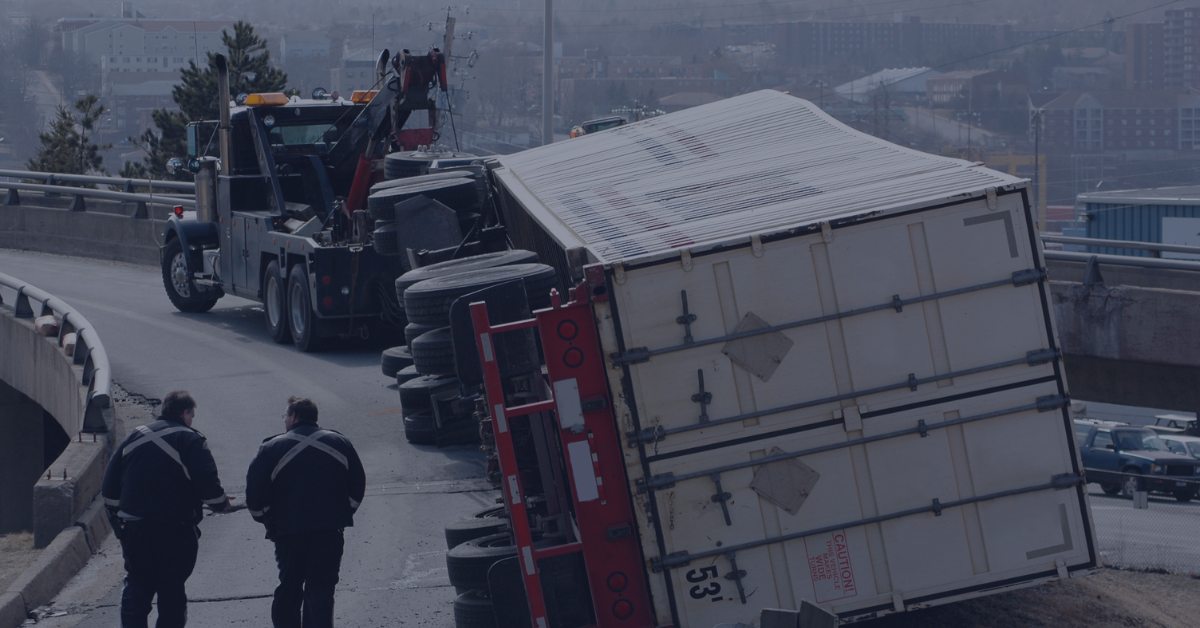Even the most careful truckers can find themselves in an accident. You can log millions of safe miles, know your routes inside and out, and follow every safety protocol, yet still encounter a moment where someone else’s mistake, bad weather, or mechanical failure changes your day in an instant.
When that happens, the steps you take in the minutes and hours afterward can make all the difference, not only for your safety, but also for protecting your livelihood, your reputation, and your legal standing. This guide walks you through the process so you can act quickly and confidently if the unexpected happens.
1. Make Safety Your First Priority
The first moments after a crash are the most critical. Before you think about paperwork, phone calls, or damage, make sure you and everyone else at the scene are safe.
Check yourself for injuries, then look for anyone else who may be hurt.
Call 911 right away if there are injuries or significant damage.
If your truck can be moved safely, steer it to the shoulder or a safe location away from traffic. If not, keep your seatbelt on until it’s safe to exit.
Set your hazard lights and deploy emergency warning triangles according to FMCSA guidelines (for most highways, at 10, 100, and 200 feet behind your vehicle). This is both a safety requirement and a lifesaving measure for approaching drivers.
Accident scenes can quickly become secondary hazards, so your focus should be on preventing further harm.
2. Contact Emergency Services — Even for Minor Accidents
It can be tempting to “handle it” yourself if the damage seems minor, but in trucking, every accident needs to be officially documented. Calling local law enforcement ensures there is an official police report — something your company, insurer, and possibly the DOT will need.
When speaking with dispatchers:
Provide your exact location (highway, mile marker, direction of travel).
Give clear, factual details about the vehicles involved and any injuries.
Avoid speculating about what happened; just report the facts.
A police report protects you later by creating a neutral, time-stamped record of the incident.
3. Notify Your Company Immediately
Your carrier needs to know about the accident as soon as possible. Call your dispatcher, safety manager, or the emergency contact number your company provides. Be ready to give:
Time and location of the accident
Description of the incident
Any known injuries
Law enforcement agency responding
Whether your truck is drivable
Most carriers have a step-by-step accident protocol. Following it exactly will help you meet DOT requirements and keep you in compliance with your company’s policies.
4. Document Everything You Can
In the moments after an accident, your phone’s camera is one of your most important tools. Take clear photos of:
All vehicles involved, including license plates and USDOT numbers
Damage from multiple angles
The surrounding roadway, traffic signs, and signals
Skid marks, debris, or anything else that shows how the accident happened
The weather and lighting conditions
Also write down:
Names, addresses, and phone numbers of other drivers, passengers, and witnesses
Insurance details for all involved parties
The police officer’s name, badge number, and case/report number
Even small details may prove important later, so if you’re not sure whether to record something, do it anyway.
5. Don’t Admit Fault — Keep It Professional
After an accident, emotions run high. You might feel pressure to apologize, explain yourself, or reassure the other driver — but in the trucking industry, even a casual “I’m sorry” can be taken as an admission of fault.
Instead, keep your conversations short, polite, and professional. Share factual details with police, your company, and your insurer. Let investigators determine what happened.
6. Seek Medical Attention Even If You Feel Fine
Adrenaline can mask pain and injury. You may not notice neck stiffness, back pain, or headaches until hours or days later. That’s why it’s important to be checked by a medical professional as soon as possible after an accident.
Getting evaluated right away also creates a medical record that links any later symptoms directly to the accident, which is important for insurance claims and workers’ compensation cases.
7. Follow Up on Reporting and Insurance
Once you’ve handled the immediate steps, stay in close communication with your company’s safety department. They may need additional photos, written statements, or forms for the insurance provider.
Your carrier is also responsible for meeting FMCSA accident reporting rules, but your cooperation ensures everything is handled quickly and accurately.
8. Know Your Legal and DOT Obligations
As a CDL holder, you have extra responsibilities after an accident:
Post-accident drug/alcohol testing is required by FMCSA in certain situations, including crashes involving fatalities, injuries requiring immediate off-site treatment, or disabling damage requiring a tow.
Accident registers: Your carrier must keep records of certain accidents for three years.
Understanding these requirements before an accident happens will help you avoid surprises.
9. Address the Mental Side of Recovery
Even minor accidents can shake your confidence behind the wheel. It’s normal to feel stressed, anxious, or distracted afterward. Don’t ignore those feelings — talk to your safety manager, family, or a counselor if needed.
A professional driver’s livelihood depends on focus, so taking the time to mentally reset is as important as repairing your truck.
The Bottom Line
Accidents are never part of the plan, but they are a reality of life on the road. The way you respond in the moments and days afterward can protect your safety, your career, and your peace of mind.
Keep an accident kit in your cab with:
A flashlight and extra batteries
Paper, pen, and an accident checklist
A fully charged phone and charger
Preparation, calm thinking, and knowing your responsibilities will help you handle any incident with professionalism — and get you safely back on the road where you belong.




